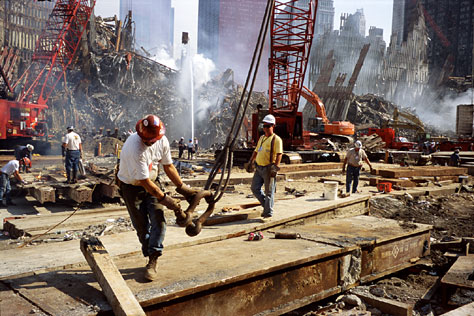WTC Health Program Expands on Long Island
If you live on Long Island and are a member of the World Trade Center Health Program (WTCHP), the treatments, resources, and facilities available to you have significantly expanded and improved.
Posts about:
If you live on Long Island and are a member of the World Trade Center Health Program (WTCHP), the treatments, resources, and facilities available to you have significantly expanded and improved.
The World Trade Center Health Program (WTCHP) provides cost-free medical monitoring and treatment for individuals who have suffered physical injuries arising out of or related to the September 11th attacks. However, only those injuries and conditions contained on the WTCHP’s list of “WTC-Related Physical Health Conditions” qualify for benefits under the program. That list can be amended by the WTC Program Administrator to include other health conditions if new research and evidence shows a relationship between 9/11 terrorist site exposures and those health conditions.
Adults weren’t the only people who found themselves near the World Trade Center and in Lower Manhattan on September 11th, 2001. Plenty of children were in the area on that terrible day, and a new study has come to a disturbing conclusion: kids exposed to the toxic dust cloud that arose from the debris have shown early warning signs of cardiovascular disease.
As the years have passed since that terrible day the Twin Towers were brought down, researchers keep learning more about the long-term health consequences related to the inhalation of toxic dust and other hazardous materials at the World Trade Center site.
Many of the losses suffered by victims of the September 11th attacks aren’t necessarily reflected in medical bills or in paychecks which never come. The trauma from that terrible day can be felt in pain, psychological or emotional distress, and the inability to enjoy life as it once was. While such losses can’t be seen, they are very real, and awards of Zadroga Act compensation can include damages for what is commonly referred to as “pain and suffering.” However, such claims have certain limitations and there are caps that have been placed on the amount that can be awarded for such “non-economic” losses.
The James Zadroga 9/11 Health and Compensation Act of 2010 was reauthorized in 2015. This was no small accomplishment. It took the commitment of thousands of individuals who were advocates for victims, first responders, and recovery workers effected by the September 11th attacks. The 9/11 attorneys at Hansen & Partner actively and proudly assisted the “Citizens for the Extension of the James Zadroga Act” in passing this important piece of legislation that provides benefits, treatment, and compensation to the thousands of individuals and families dealing with 9/11-related illnesses and losses.
When the 9/11 Zadroga Act was reauthorized in 2015, several changes were made to the Victim Compensation Fund (VCF) program. Many of these changes have a direct impact on how compensation awards are made and how much Zadroga Act compensation an individual claimant may receive for certain types of losses.
